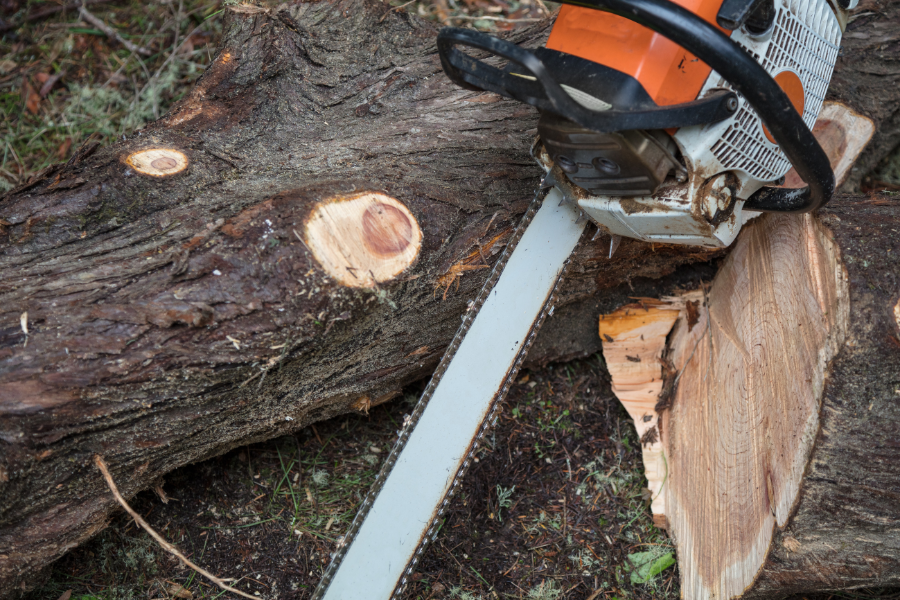Trees are valuable assets that beautify our surroundings while providing numerous environmental benefits. However, working with trees can be dangerous without proper equipment and safety measures. This blog post will discuss the essential tree care equipment, safety guidelines, and best practices to ensure safe and efficient tree care in Giffnock, Glasgow.
Essential Tree Care Equipment
When working with trees, you must use the right tools and equipment to stay safe and get the job done. Here are some of the essential tree care equipment:
Chainsaws
Chainsaws are essential tools for cutting down trees or pruning branches. It’s crucial to use the right type of chainsaw for the job, such as gas-powered or electric chainsaws. Additionally, modern chainsaws come equipped with various safety features like chain brakes, anti-vibration systems, and throttle locks to prevent accidents. Always follow the manufacturer’s instructions on how to use chainsaws safely.
Pruning shears
Pruning shears come in different sizes and shapes for trimming small branches or removing dead wood from trees. They have sharp blades that can cause injuries if not handled correctly. Choose pruning shears with safety features like a locking mechanism or a blade cover when not in use.
Ladders and Safety Harnesses
Ladders are necessary tools for reaching high branches or climbing trees. However, using ladders incorrectly can lead to falls resulting in severe injuries or death. Always ensure that the ladder is stable before climbing it and avoid overreaching while on it. Additionally, consider wearing a safety harness when working at heights above 6 feet.
Ropes and Rigging Equipment
Ropes and rigging equipment are necessary when lowering heavy tree limbs safely. Ensure that you use ropes made from durable materials that can support the weight of the limb you’re lowering.
Safety Guidelines and Best Practices
Working with trees comes with certain risks, which is why it’s essential to adhere to safety guidelines and best practices. Here are some of the key tips for safe tree care:
Pre-work Inspection
Before starting any work on a tree, inspect your equipment for potential hazards like damaged wires or dull blades that may cause accidents while working. Also, check your work area for obstacles like power lines or debris that may interfere with your work.
Personal Protective Equipment (PPE)
When working with trees, always wear PPE such as gloves, hard hats, eye protection glasses/goggles/visors, hearing protection devices (earplugs/earmuffs), steel-toed boots/shoes etc., depending on the task at hand.
Safe Work Practices
Climbing trees requires knowledge of safe techniques such as keeping three points of contact with the tree at all times while climbing up/down; maintaining balance by shifting body weight gradually; avoiding using spikes on live trees etc. Also, be careful when cutting large limbs by properly securing them before making cuts to avoid injury due to falling limbs.
Hazard Identification and Mitigation
Identify potential hazards around your work area such as nearby power lines or unstable branches that could fall during work activities. Take necessary precautions to mitigate these risks by creating barriers between hazard zones and secure areas where people may be present.
Emergency Procedures
Accidents do happen despite taking all precautions; therefore, it’s important to have emergency procedures in place should an accident occur during tree care activities. Have a first aid kit readily available along with an emergency plan detailing what steps need to be taken in case of accidents/injuries involving personnel/equipment damage etc.
Conclusion
Proper tree work equipment and safety measures are crucial for preventing accidents and injuries while maintaining healthy and vibrant trees. Choosing the right equipment, following safety guidelines and best practices, and identifying and mitigating potential hazards are essential for safe and efficient tree care. If you’re not comfortable using tree care equipment or are unsure about safety measures, consider seeking professional tree care services or training.
In summary, investing in the right tree care equipment and adhering to safety guidelines and best practices are critical to ensuring the safety of yourself and others while performing tree care tasks. Taking the time to carefully evaluate the work area, inspect the equipment, and wear proper safety gear can help prevent serious accidents and injuries. By following these tips, you can maintain a healthy and beautiful landscape while minimizing risk.

